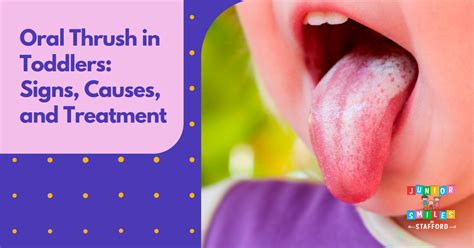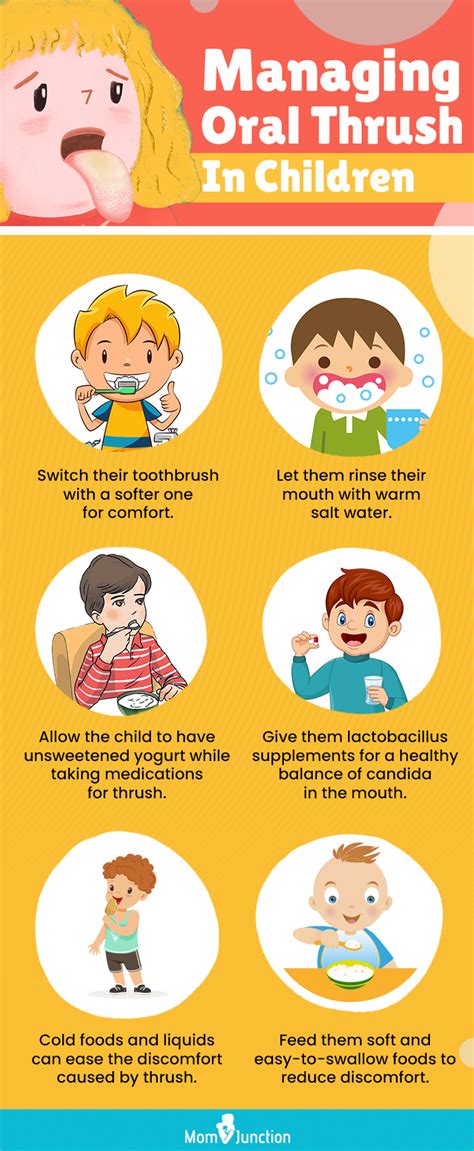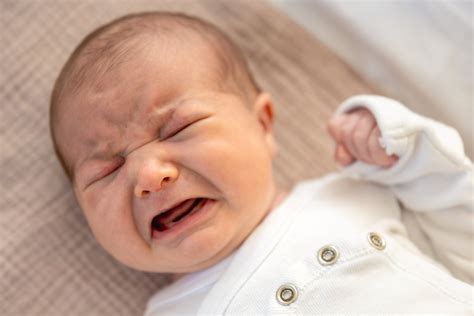Intro
Identify thrush in baby symptoms, including white patches, oral yeast infections, and diaper rash, to provide prompt treatment and relief for your infants discomfort, promoting healthy oral and skin care habits.
Thrush is a common fungal infection that can affect babies, causing discomfort and distress for both the baby and the parents. It is essential to recognize the symptoms of thrush in babies to provide timely and effective treatment. Thrush in babies can manifest in different ways, and being aware of these symptoms can help parents take prompt action to alleviate their baby's suffering. The importance of understanding thrush in babies cannot be overstated, as it can lead to a range of complications if left untreated. Moreover, recognizing the symptoms of thrush can also help parents differentiate it from other conditions that may have similar symptoms, ensuring that their baby receives the correct diagnosis and treatment.
Thrush is a type of fungal infection caused by the Candida fungus, which is naturally present on the skin and in the mouth. However, when the balance of bacteria and fungi in the body is disrupted, Candida can overgrow, leading to thrush. In babies, thrush can occur due to various factors, including antibiotic use, immune system weakness, and poor oral hygiene. It is crucial for parents to be aware of the risk factors and take preventive measures to reduce the likelihood of their baby developing thrush. By understanding the causes and symptoms of thrush, parents can take a proactive approach to maintaining their baby's health and well-being.
The symptoms of thrush in babies can vary depending on the location and severity of the infection. Common symptoms include white patches on the tongue, inside of the cheeks, and gums, which can be painful and cause discomfort while feeding. Babies with thrush may also exhibit fussiness, irritability, and refusal to feed due to the pain and discomfort associated with the infection. In some cases, thrush can also cause diaper rash, which can be red, inflamed, and painful. Recognizing these symptoms is crucial, as thrush can be treated effectively with antifungal medications and home remedies. Early detection and treatment can help alleviate the symptoms, prevent complications, and promote a speedy recovery.
Causes and Risk Factors of Thrush in Babies

How to Prevent Thrush in Babies
Preventing thrush in babies requires a combination of good oral hygiene practices, a healthy diet, and careful attention to the baby's overall health. Parents can take several steps to reduce the risk of their baby developing thrush, including cleaning the baby's mouth regularly, sterilizing pacifiers and bottles, and practicing good hygiene during breastfeeding. A healthy diet rich in fruits, vegetables, and whole grains can also help boost the baby's immune system and reduce the risk of thrush. Furthermore, avoiding the use of antibiotics unless absolutely necessary and taking steps to prevent the spread of thrush, such as washing hands regularly and sterilizing any items that come into contact with the baby's mouth, can also help prevent thrush.Symptoms of Thrush in Babies

Diagnosing Thrush in Babies
Diagnosing thrush in babies typically involves a physical examination and a review of the baby's medical history. A healthcare provider may examine the baby's mouth and look for white patches or other signs of infection. A swab of the affected area may also be taken to confirm the presence of Candida. In some cases, a healthcare provider may also perform other tests, such as a blood test or a stool test, to rule out other conditions that may be causing the symptoms.Treatment Options for Thrush in Babies

Home Remedies for Thrush in Babies
Home remedies can be an effective way to alleviate the symptoms of thrush in babies and promote healing. Some popular home remedies include: * Applying yogurt or coconut oil to the affected area to help reduce inflammation and promote healing * Using a soft-bristled toothbrush to gently remove any white patches or debris from the baby's mouth * Avoiding sugary or acidic foods and drinks, which can exacerbate the infection * Practicing good oral hygiene, such as cleaning the baby's mouth regularly and sterilizing pacifiers and bottles * Using a humidifier to add moisture to the air, which can help reduce the risk of thrushComplications of Untreated Thrush in Babies

Preventing the Spread of Thrush in Babies
Preventing the spread of thrush in babies requires careful attention to hygiene and infection control practices. Parents can take several steps to reduce the risk of spreading thrush, including: * Washing hands regularly, especially after changing diapers or feeding the baby * Sterilizing pacifiers and bottles regularly * Avoiding sharing utensils or toys that come into contact with the baby's mouth * Practicing good oral hygiene, such as cleaning the baby's mouth regularly * Avoiding close contact with others who have thrush or other infectionsConclusion and Final Thoughts

What are the symptoms of thrush in babies?
+The symptoms of thrush in babies include white patches on the tongue, inside of the cheeks, and gums, painful and inflamed mouth, fussiness and irritability, refusal to feed, and diaper rash.
How is thrush in babies diagnosed?
+Thrush in babies is typically diagnosed through a physical examination and a review of the baby's medical history. A healthcare provider may also take a swab of the affected area to confirm the presence of Candida.
What are the treatment options for thrush in babies?
+Treatment for thrush in babies typically involves antifungal medications, such as nystatin or clotrimazole, which can be applied directly to the affected area. Home remedies, such as applying yogurt or coconut oil, can also help alleviate the symptoms and promote healing.
